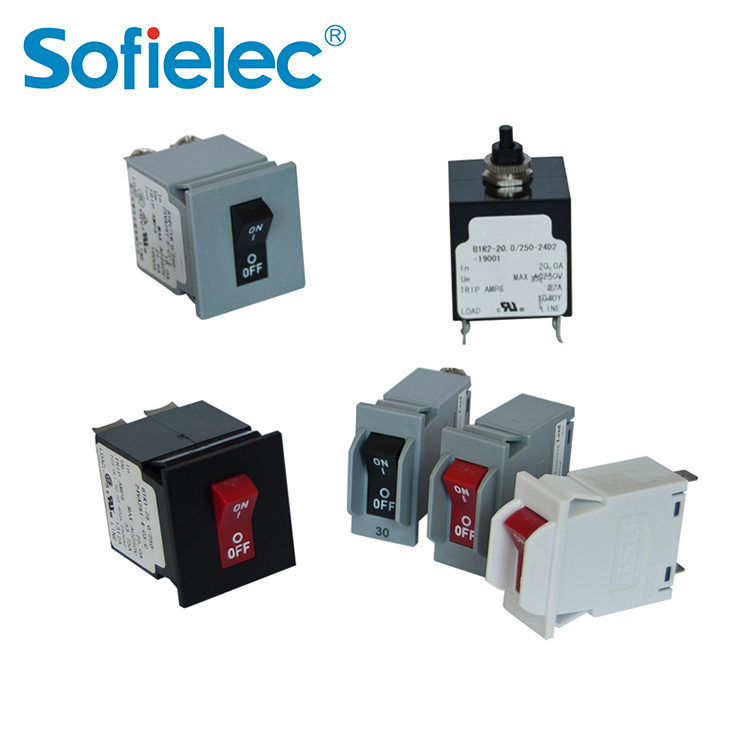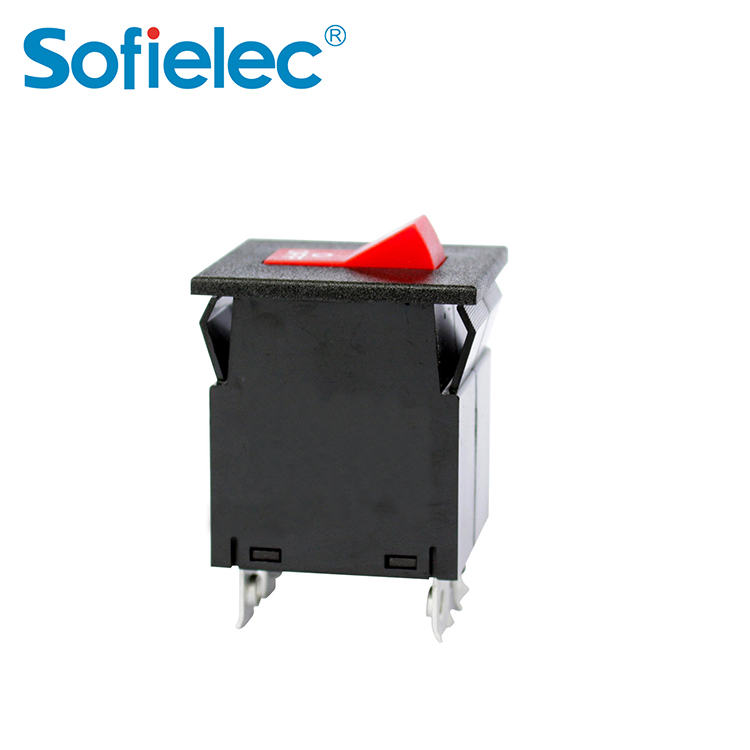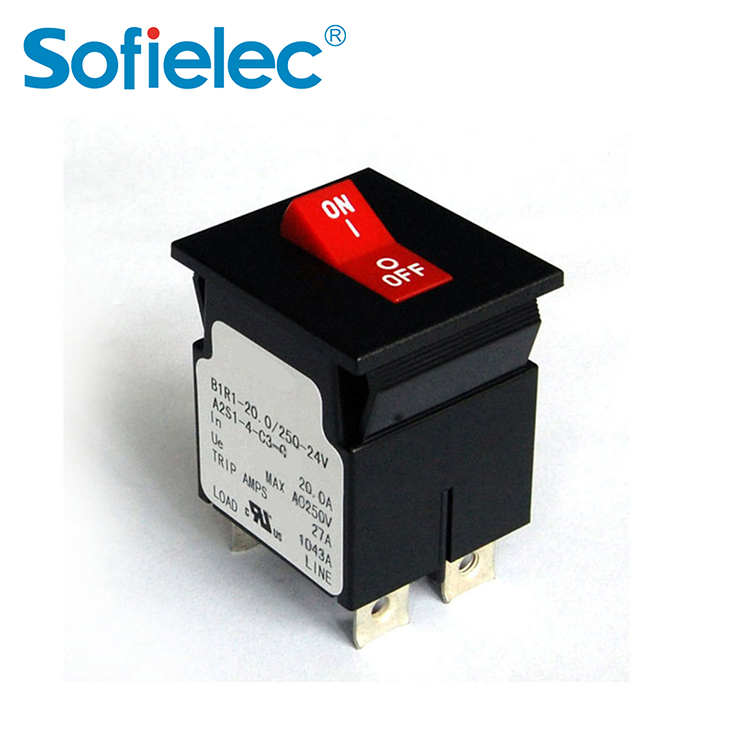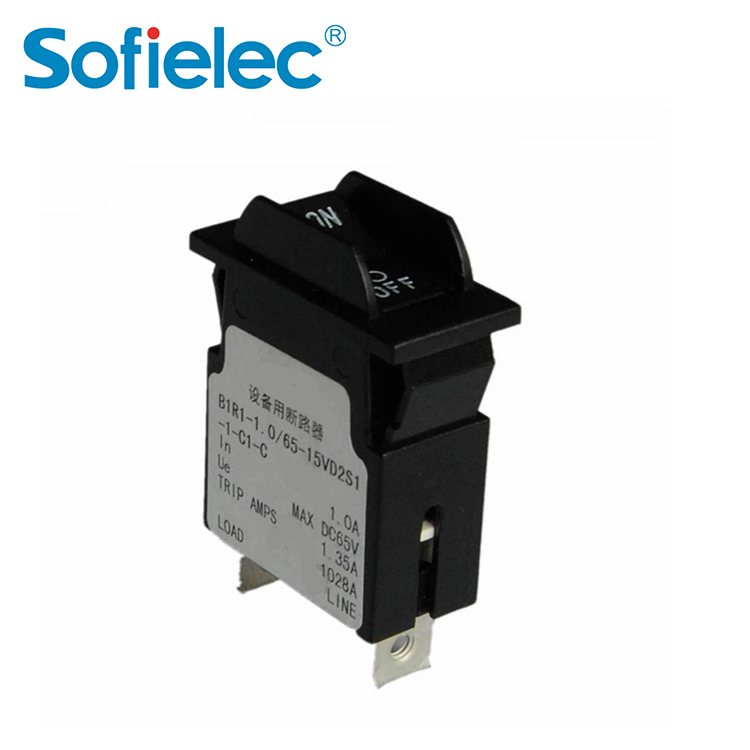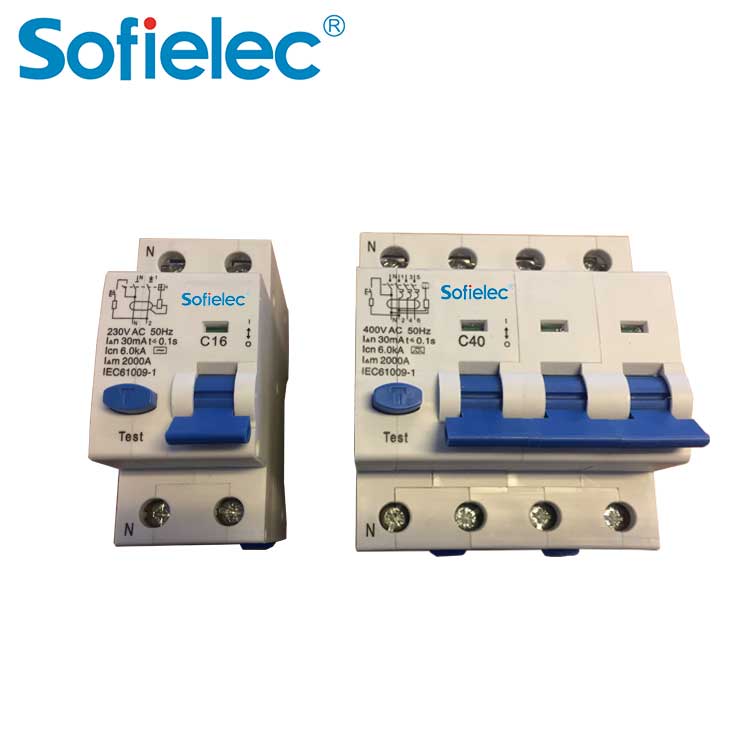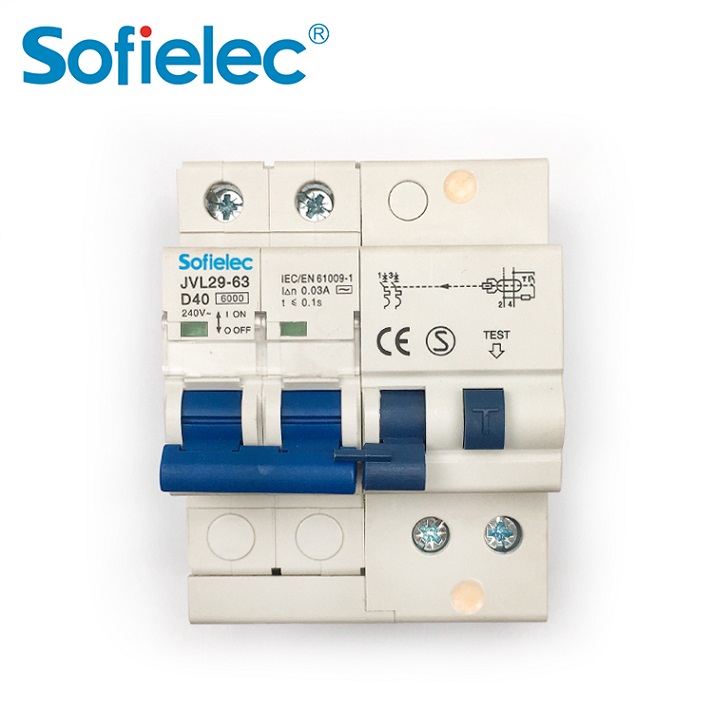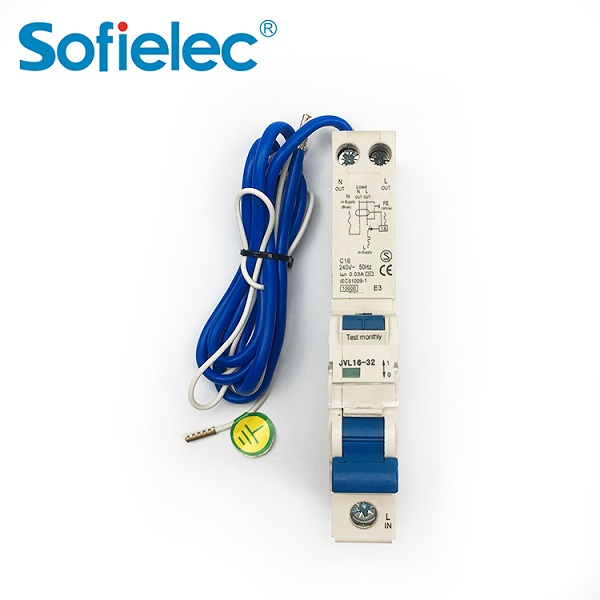Categories
| Categories | Hydraulic electromagnetic circuit breaker |
| Model | B1 |
| Maximum voltage | 250V AC 50/6Hz,80V DC |
| Current Ratings | 1A to 30A |
| Insulation resistance | Minimum of 100 Megohms at 50V DC |
| Operating Temperature | -40℃ to +85℃ |
| Number of poles | 1,2 |
| Weight | Approximately 30grams/pole |
| Agency Certifications | EN60934,UL1077,GB17701,and UL489A |
| Electrical | see table below |
| SERIES | B1 SERIES |
| ACTUATOR | R1:ROCHER(WITH ANGLE);R2:ROCHER(FLAT) |
| CIRCURT SO | SWITCH ONLY,USED CURRENT 30 |

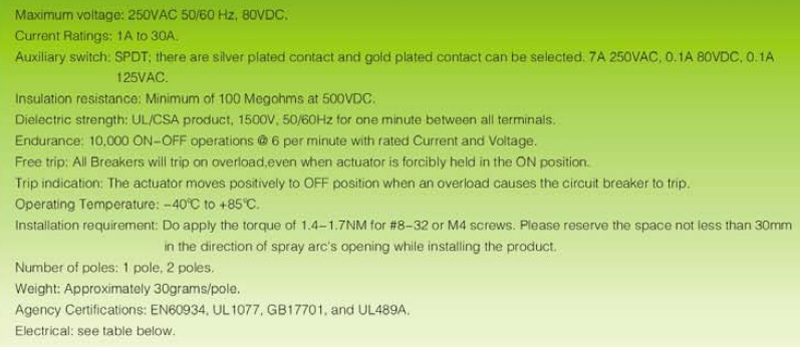
| Type | Voltage | Poles Breaking | Rated Current ln(A) | Short Cireuit Capacity | ||||
| Max.Rating | Frequency | UL/CSA | TUV | |||||
| With Backup Fuse | Without Backup Fuse | With Backup Fuse | Without Backup Fuse | |||||
| B1 | 65 | DC | 1,2 | 1~30 | 3000 | 1000 | 3000 | 1000 |
| 80 | 1 | 1~30 | -- | 800 | -- | 800 | ||
| 250 | 50/60 | 2 | 1~30 | -- | 1000 | 3000 | 1000 | |
| 1 | 1~30 | -- | 1000 | 3000 | 1000 | |||
| Note:Polarty Sensitive for DC. 65Vand 80V.one pole | ||||||||
Time Delay Values:
| Trip Time Seconds | Delay | 1ln | 1.35ln | 1.5ln | 2ln | 4ln | 6ln |
| A0,D0 | No Trip | May Trip | Max 0.10 | Max 0.05 | Max 0.018 | Max0.015 | |
| A1,D1,H1,G1 | No Trip | 0.3-7.5 | 0.2-5 | 0.1-2.2 | 0.03-0.53 | 0.008-0.35 | |
| A2,D2,H2,G2 | No Trip | 3-75 | 2-40 | 1.0-15 | 0.1-4.5 | 0.008-2.0 |
B1 Time Delay
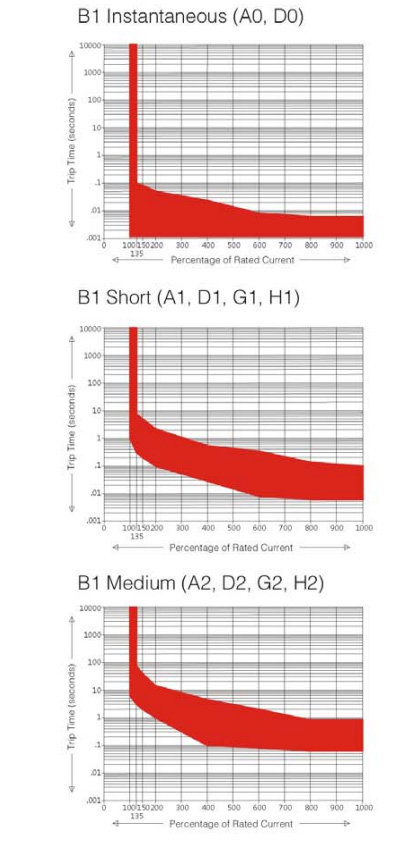
Specification of B1 series circuit breaker and code implication(for selection)
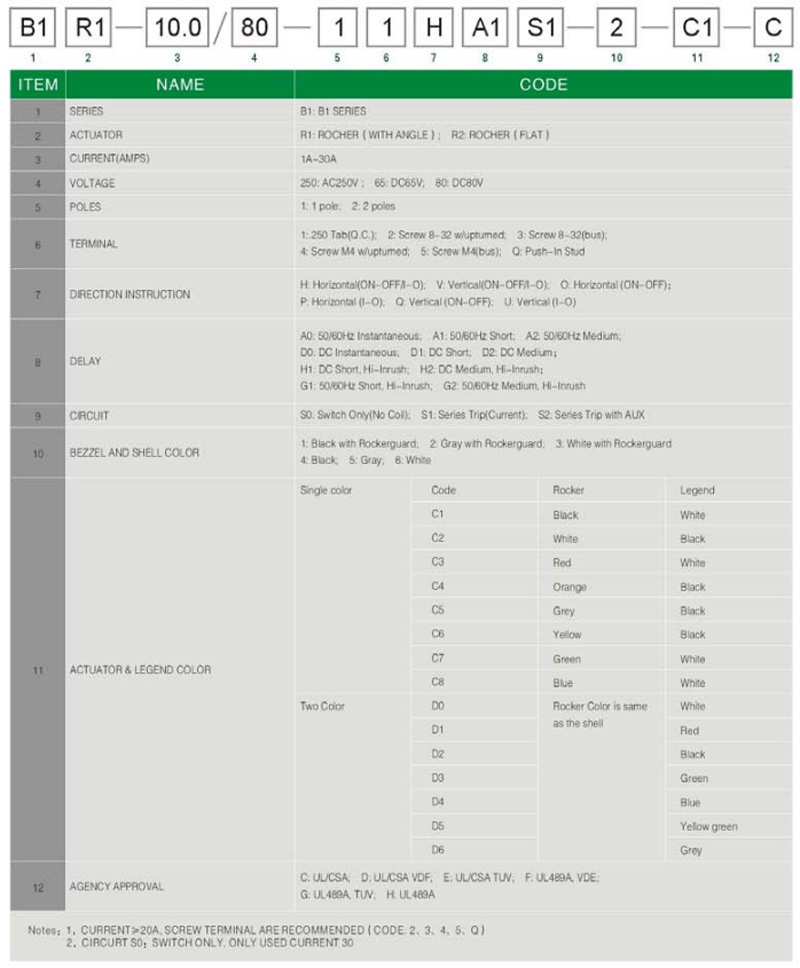
B1 Series Circuit Breaker - Form&Fit Drawings
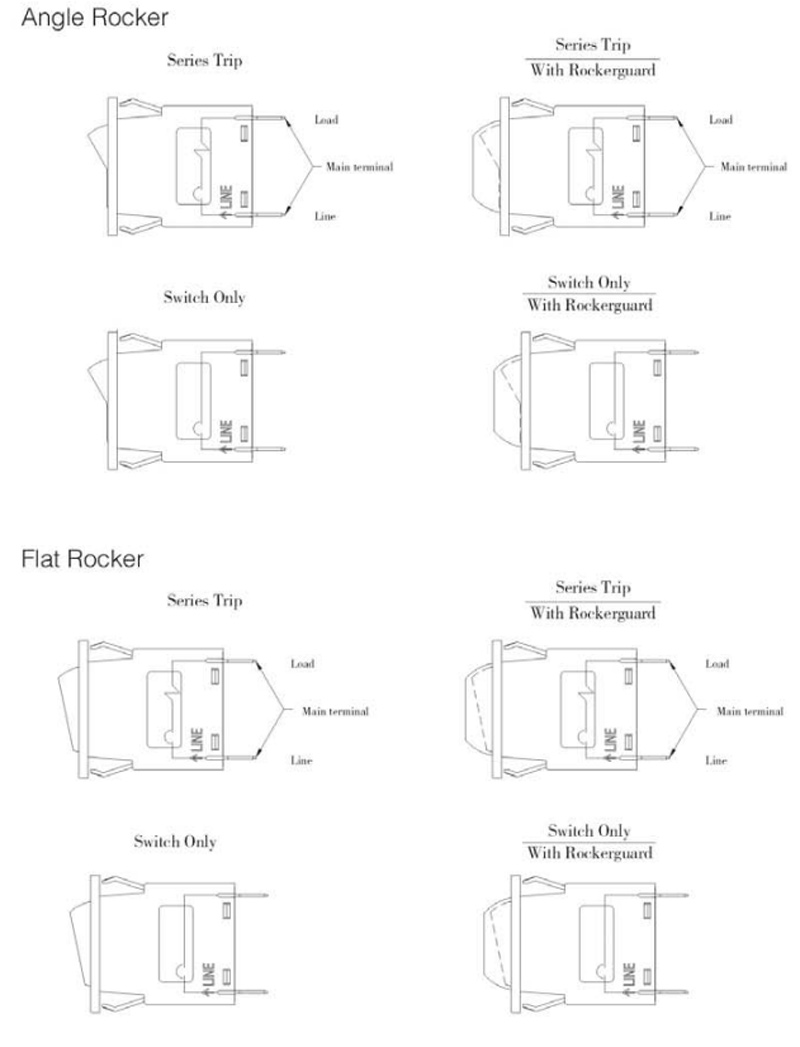
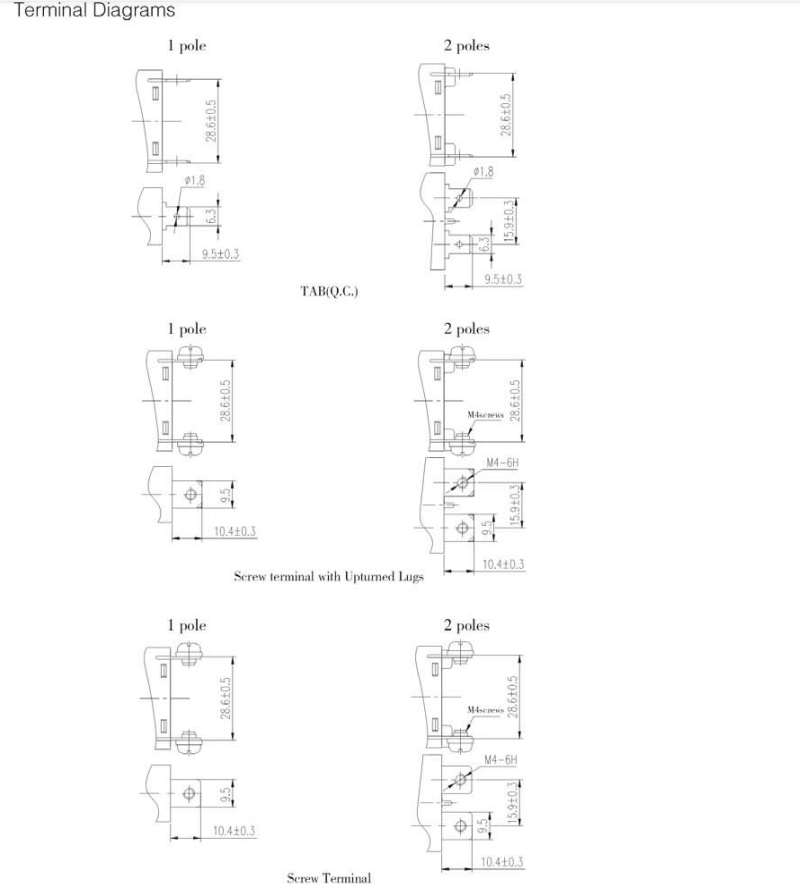
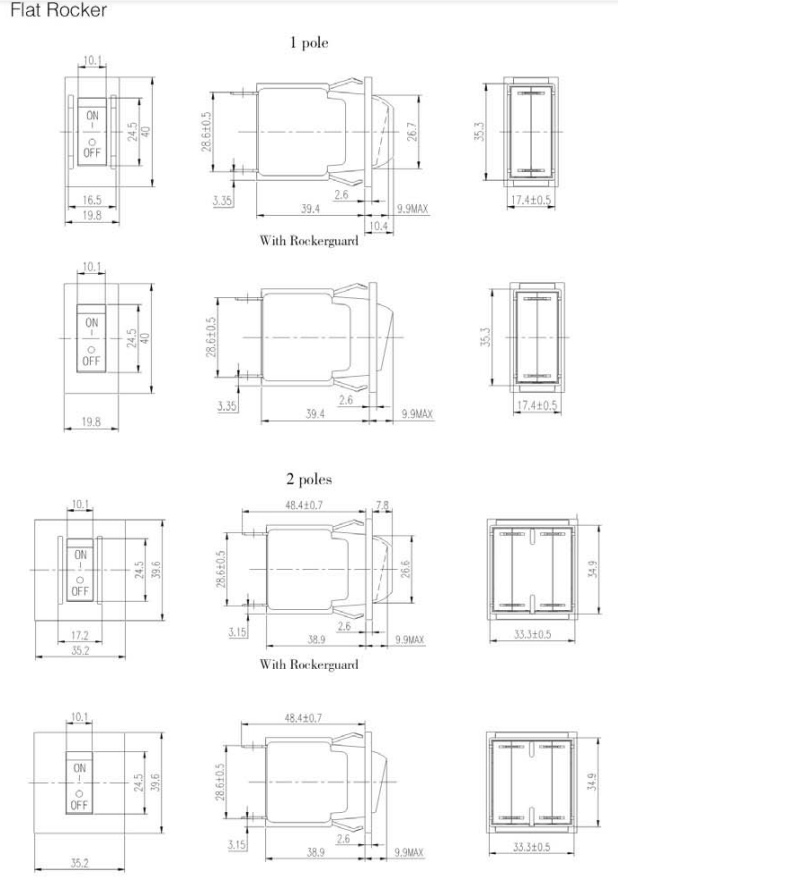
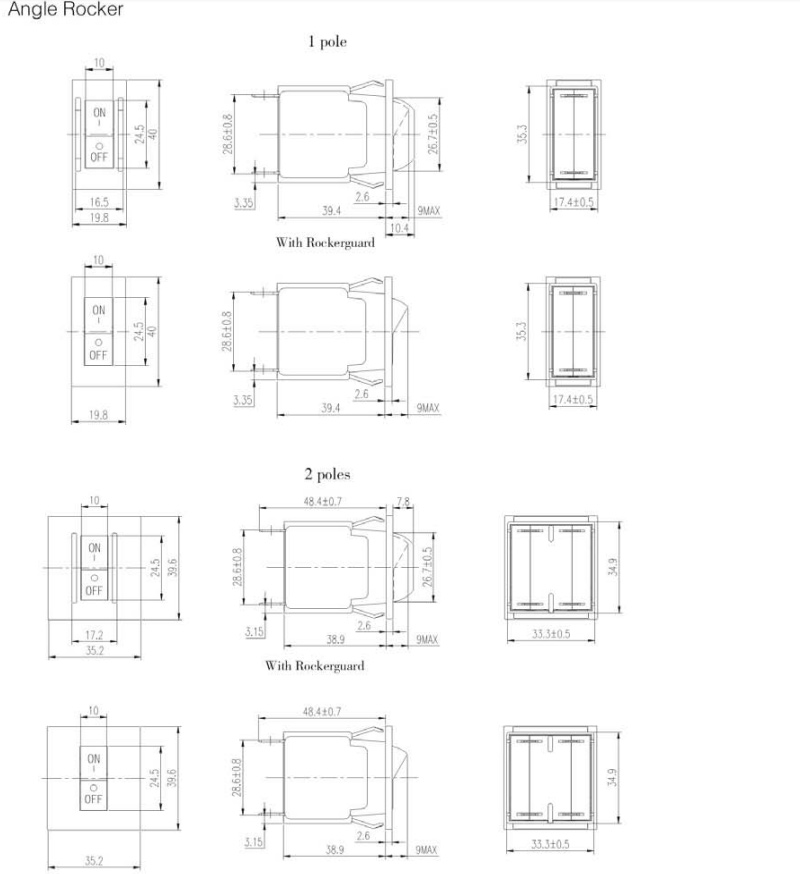
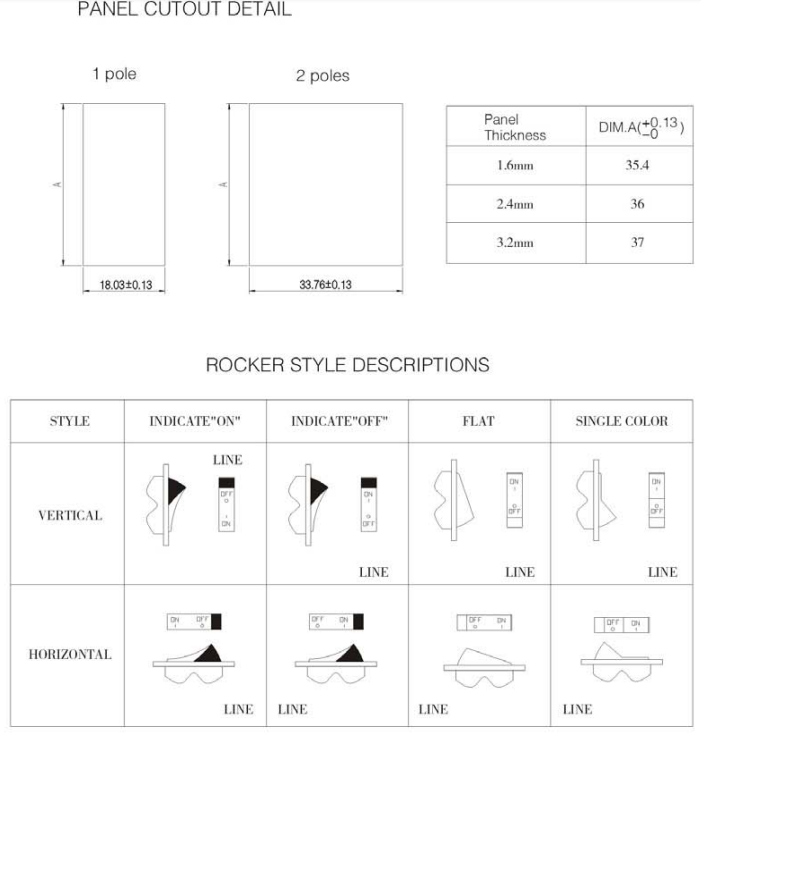
Related Products
News Center
> What are the four types of timer switches?
A time switch, often simply referred to as a timer, is a device that automatically controls when an electrical circuit is turned on or off. It's like a programmable ...
> Can You Replace a 10 Amp Breaker with a 20 Amp Breaker?
Replacing a 10-amp circuit breaker with a 20-amp one without a thorough professional evaluation is extremely dangerous and poses a significant fire hazard. Let's ana...
> What Makes a Circuit Breaker Essential for Home Electrical Safety?
Home electrical safety ranks high on every homeowner’s priority list, yet many overlook the quiet workhorse that prevents crises before they start. This device acts ...
> What Scenarios Require the Use of a Residual Current Circuit Breaker?
Electrical safety is a top priority in daily life and work, yet many people are unsure when to use a device that guards against electric shock. This article explains...

